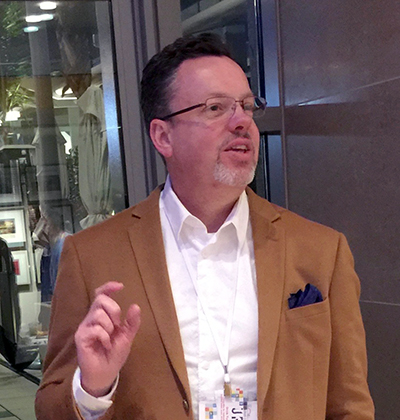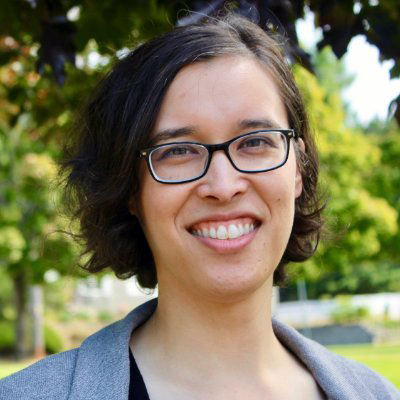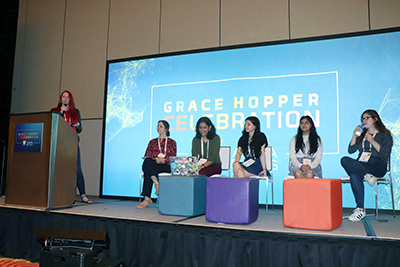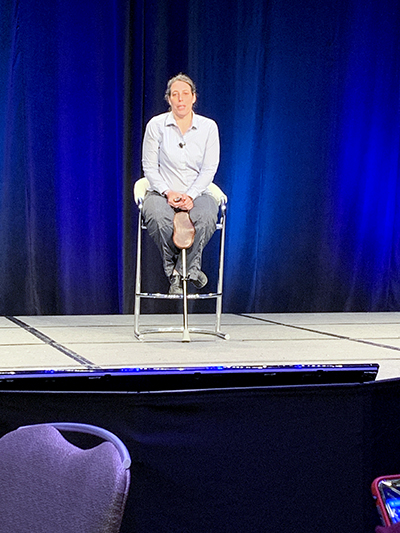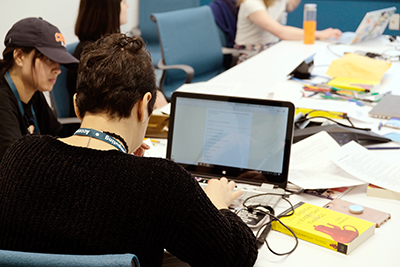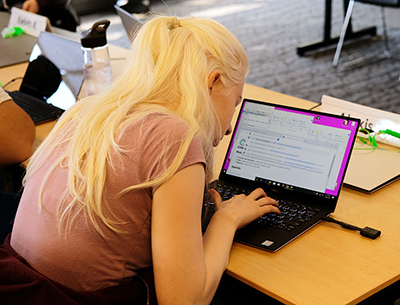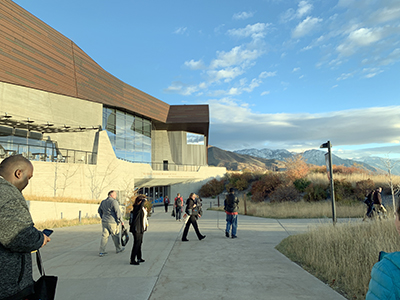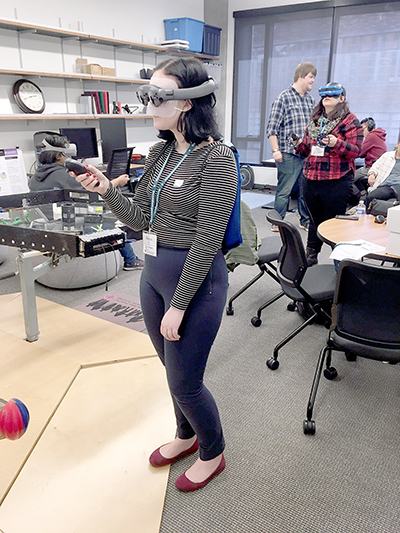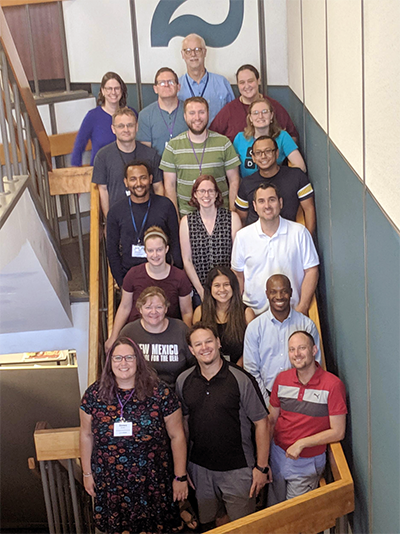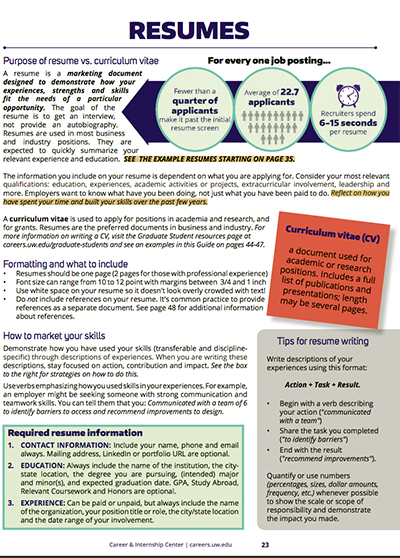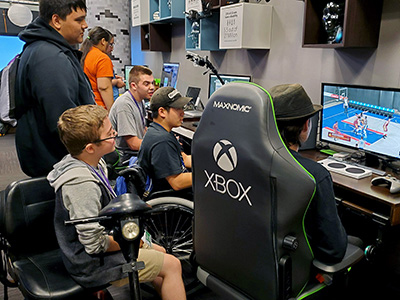I had already had ideas for a project around amblyopia—sometimes known as lazy eye—when I was working on a few other projects under Ph.D. students of Professor Mircea Teodurescu, who is married to Sri Kurniawan, the leader of the Assistive Sociotechnical Solutions for Individuals with Special needs using Technology (ASSIST) Lab. Professor Teodurescu gave me a lab tour and invited me to attend his next lab meeting. After a few months on the PhD students’ projects, I told Mircea I was interested in using the lab’s virtual reality for this amblyopia project I had thought of and wanted to test. He introduced me to Professor Kurniawan, and she expressed interest in the project idea and agreed to fund me to research for them. At this time I was also already the leader for ALI (Accessibility Leadership and Internship), a group funded by the disability resource center on campus to destigmatize disability, so I loved the research I was doing and how I could make a difference for students with visual impairments in STEM. I have been happily working for Sri’s lab, ASSIST Lab ever since.
The project I started working on came from my own experiences as a person with amblyopia. Amblyopia, though very serious, impacting everything from vision to reading comprehension, is treatable via occlusion therapy. Its effectiveness has been known for decades. However, compliance with occlusion therapy is infamously bad. Due to this, there has been a slew of new research looking into using 3D or virtual reality video games as therapy, with probably the most famous project being Vivid Vision. These research projects have been largely successful and offer a wonderful alternative to traditional treatment.
However, some of these projects, surprisingly, did not report great compliance with therapy. I was shocked when I first learned this. I was one of those people with amblyopia who was prescribed to do occlusion therapy and did not follow through with it—therapy was often very uncomfortable. As someone who also loves virtual reality, I started wondering why these projects did not have better compliance than traditional therapy; personally, I would love to play virtual reality games as my therapy. I started taking a look at some of the game designs that were being used and thought some of them might be problematic, considering the symptoms of amblyopia. I wanted to see if other people with amblyopia agreed with my analysis. I used Unity to create a VR video game like those being used in the most cutting-edge research and I invited participants to play it with an HTC Vive.
I then interviewed participants. I asked them questions about the game design and projected compliance and found some recurring themes. I found that keeping visual crowding to a minimum is more comfortable. Visual crowding is when there are too many objects in one’s field of view, and it bottlenecks object recognition. The visual crowding phenomenon is something people with amblyopia have a hard time with, so it makes sense that this was a re-occurring theme. Additionally, participants reported that having the key objects be large, “about the size of a small dinner plate,” and visually distinct was more comfortable. Furthermore, having haptic and audio feedback for confirmation of touch is beneficial. People with amblyopia have a loss of depth perception, making it critical to acknowledge in the game design process. An even better solution would be to use accessibility researcher Yuhang Zhao’s Unity asset for game designers to add to their games to make them more accessible to people with visual impairments. This asset has a setting that allows game developers to add a beam that comes out of the controller and onto an object to better understand the depth. Additionally, we found having a game that requires movement left to right, but not as much forwards and backward, is more comfortable. Left and right movement relies less on depth perception. Lastly, people with amblyopia have a difficult time reading. Thus, it makes sense our participants were in favor of play through instructions instead of text-based instructions. Additionally, participants did not like timed reading expectations in video games. For example, text that quickly pops up to tell you “slash as many as possible” and promptly disappears. Hopefully, if 3D and VR games take these insights into account while designing their game, they are likely to have an increase in compliance and, therefore, overall efficacy.
Throughout my research and education, my disabilities have made my working process slower than that of other people in my major. It can be extremely frustrating, but I’ve learned that it is okay, and that I should be proud of what I can do. Additionally, as a symptom of one of my disabilities, I can have very rigid ideas of concepts and get stuck when it does not fit my rigid understanding. Since my disabilities are all invisible, many people do not understand when I get so stuck on certain concepts or ideas in computer engineering. There were many times in the past where I considered changing majors and felt I did not belong in this major. However, working closely with disability activists at ALI has opened my eyes to the value of communication, humility, and finding ways to make things work for me.
I have done a lot of work in accessibility. I used to work for Professor Azenkot at Cornell Tech, where I was doing accessibility research and writing academic papers on the subject. I was encouraged to submit a paper to the Student Research Competition, which was accepted. I got to showcase my poster to judges, and even made it to the semi-finals. I was extremely nervous, but it was a great opportunity, and I expected from there, that it was generally over. However, at the reception that night, I was shocked to receive first place—I had been extremely impressed with both projects that came in second and third. I was so full of adrenaline that I do not even remember physically walking up to the stage at the front of the theater. The entire experience was absolutely amazing and is my most fond memory from my career in research. ASSETs is not just a conference but a community of the most compassionate, motivated, and accepting people.
I was also fortunate enough to attend the Grace Hopper conference this year, where I was able to secure a job at Bank of America in accessibility. I was told that I will be working on making ATMs more accessible for people with disabilities as well as create software to make Bank of America a more comfortable place for employees with disabilities to work.
